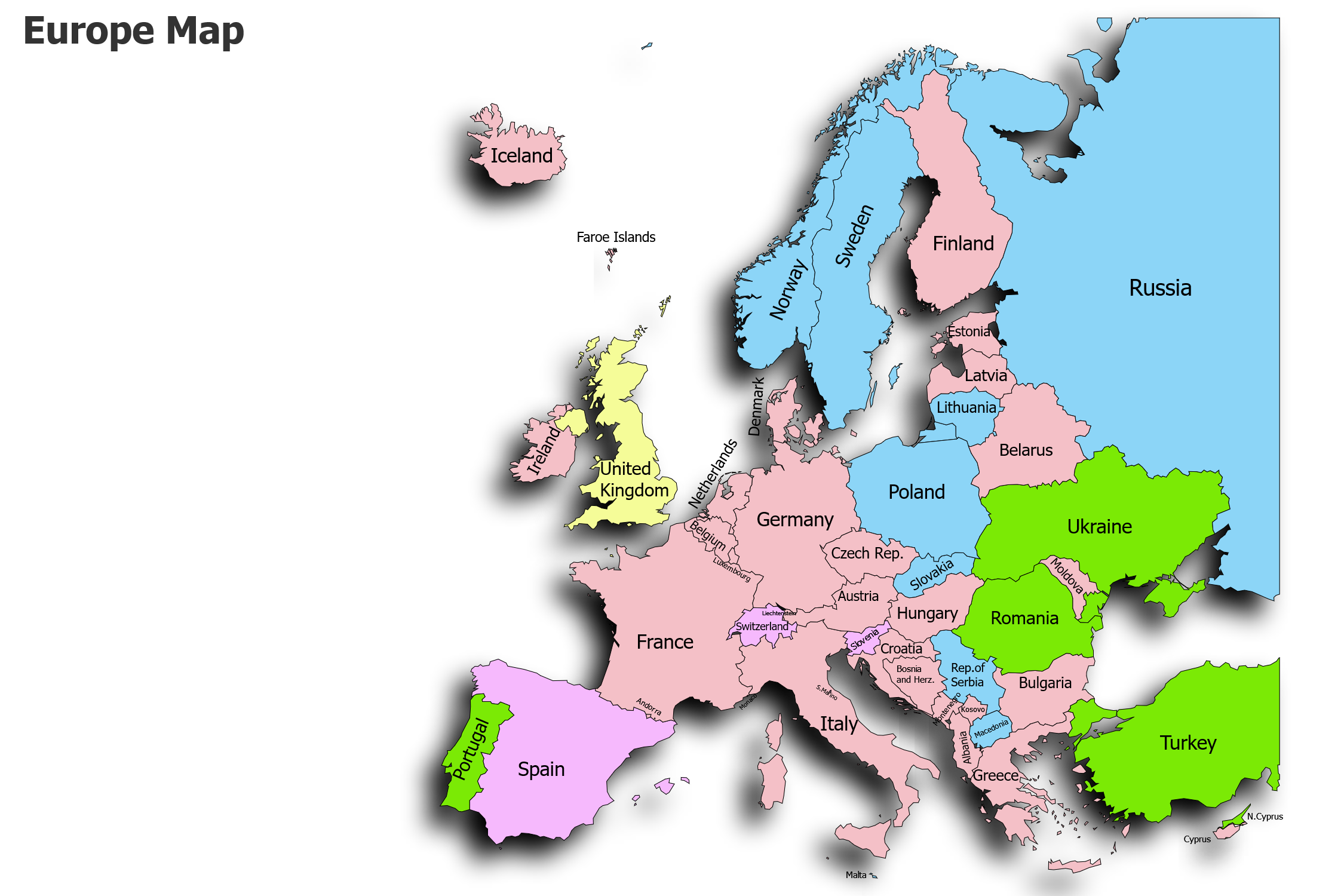European Continent
A brief about European continent

About Europe
Europe, the second-smallest continent after Australia, is a diverse and culturally rich landmass in the Northern Hemisphere. Stretching from the Arctic Ocean to the Mediterranean Sea, Europe occupies the western portion of the Eurasian landmass. It's a place where ancient traditions meet modern innovations, creating a tapestry of cultures, landscapes, and histories.
With over 747 million people living in 44 countries, Europe is a vibrant and dynamic continent. From the majestic peaks of the Alps to the iconic landmarks of Paris and Rome, Europe offers a blend of natural beauty and urban sophistication.
Europe covers an area of approximately 10.18 million square kilometers, making up about 6.8% of the world's total land area and 2% of the Earth's surface. The population of Europe is approximately 10% of the world's total population, making it one of the most densely populated continents.
Countries and Land Area
Europe's landmass is distinct from Africa and Asia due to natural geographic features such as bodies of water and mountain ranges. The Mediterranean Sea, Black Sea, and Caspian Sea form natural boundaries between Europe and Asia. The Ural Mountains and Ural River further delineate the border between the two continents.
Europe extends from the Arctic Ocean in the north to the Mediterranean Sea in the south, and from the Atlantic Ocean in the west to the Ural Mountains in the east. These natural features separate Europe from Africa to the south and Asia to the east.
Countries that span both Europe and Asia are referred to as Eurasian countries. Notable examples include Russia, Kazakhstan, Azerbaijan, Georgia, Turkey, and Cyprus. These countries often share cultural, historical, and geographical ties to both continents.
The largest country in Europe by land area is Russia. Stretching across two continents, Europe and Asia, Russia encompasses approximately 17.1 million square kilometers of territory.
Conversely, the smallest country in Europe by land area is Vatican City. Situated within the city of Rome, Italy, Vatican City covers just 0.44 square kilometers. Despite its diminutive size, Vatican City holds significant religious and cultural importance as the headquarters of the Roman Catholic Church.
Regions
There are five main geographical regions or subregions in europe.
- Western Europe
- Eastern Europe
- Northern Europe
- Southern Europe
- Central Europe
Languages
Europe is home to a wide variety of languages, with hundreds spoken across the continent. These languages belong to different language families, such as Indo-European, Uralic, and Altaic. Some of the most widely spoken languages in Europe include English, Spanish, French, German, Italian, and Russian. Additionally, there are numerous regional and minority languages spoken by indigenous and ethnic groups, reflecting the linguistic diversity of the continent.
History and Culture
Europe has a long and varied history, with many different cultures and traditions. Ancient civilizations like Greece and Rome left behind impressive buildings and ideas. Christianity became a major part of European life, influencing art and how people lived. In the Middle Ages, powerful kings ruled and trade brought new ideas from faraway places. Explorers from Europe traveled to distant lands and set up colonies. Today, Europe is a mix of many different cultures, languages, and ways of life, with each country having its own unique story to tell.
Landscapes
Europe has lots of different places to see, from big mountains to beautiful beaches. One famous mountain range in Europe is called the Alps. They're in countries like Switzerland, France, Italy, and Austria. People love going there to ski, hike, and climb.
But it's not just mountains in Europe. There are also lots of nice beaches. Countries like Greece, Spain, and Croatia have really clear water and sandy beaches. You can relax in the sun or go swimming. Europe also has lots of old buildings and famous places to visit. Like in France, there's the Eiffel Tower in Paris, and in Italy, there are ancient ruins in Rome. These places show us how people lived a long time ago.
- Read More:
- About Europe |
- Facts